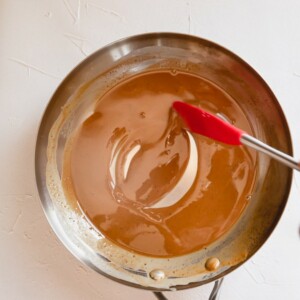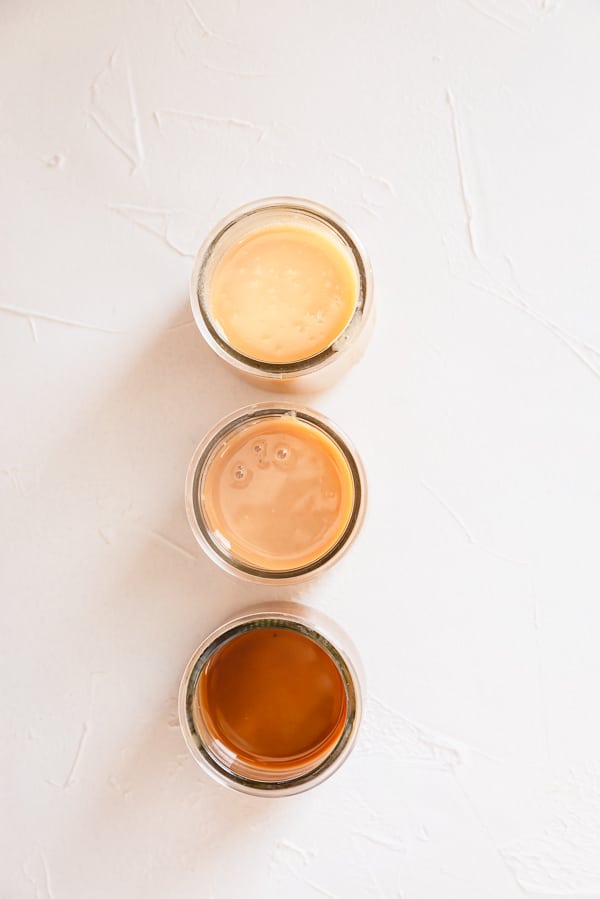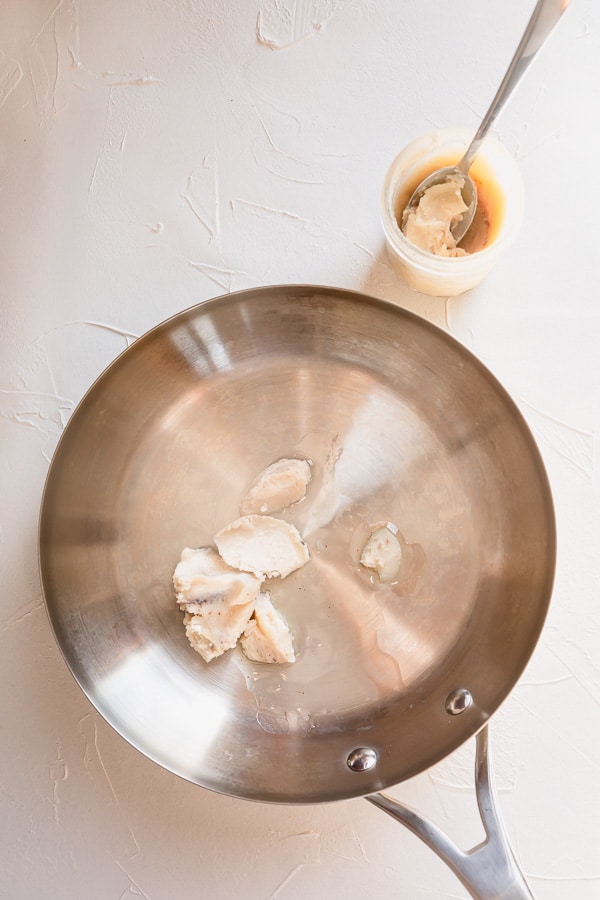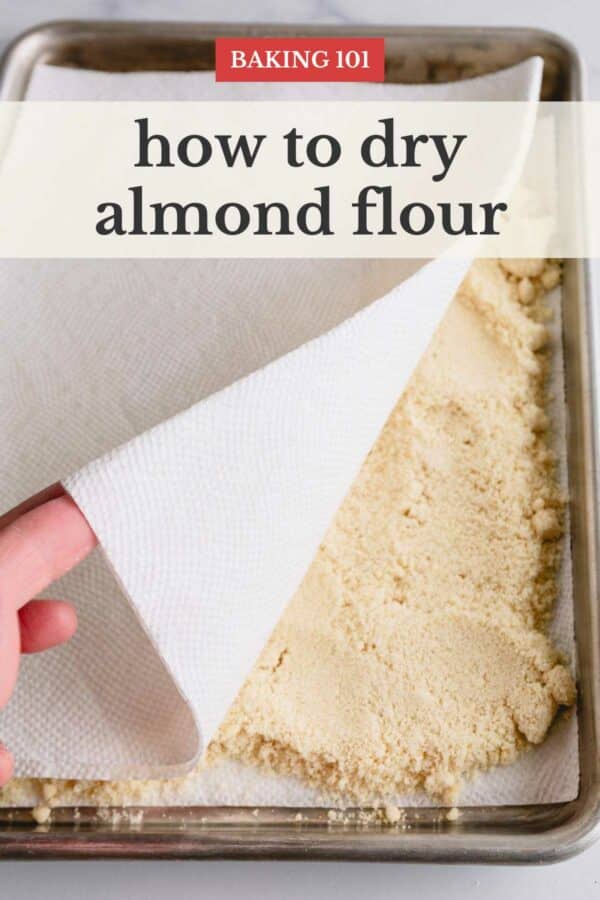A complete guide on how to make a roux for sauces, gravies and soups. In this post, you’ll learn what is roux, 3 types of roux, all the tips to a perfect roux to make amazing sauces and dishes. Plus, storing and freezing tips!
One of the fundamental cooking skills is making a perfect roux. And today I’m going to teach you how to master this skill along with lots of helpful information on how to use this classic ingredient in different dishes.
WHAT IS ROUX?
In simple terms, roux (pronounced “roo”) is a mixture of flour and fat, roasted together into a nutty paste.
It’s a foundation for many dishes like béchamel sauce, gravy, stew, mac and cheese, gumbo, Alfredo sauce and more. So, even if you’ve never heard of this term before, you mostly likely have made it.
What is a roux used for?
A roux is typically used as a thickener for cream sauces, gravies and soups. Dark roux has the least thickening power, but it adds amazing flavors in dishes, like gumbo.
Unlike raw flour, roux produces nice and smooth texture in gravies and sauces. If you add raw flour into a liquid to thicken, you’ll get lumpy mess with an unpleasant dough-y flavor.
Roasting the flour in fat removes that raw flour taste.
HOW TO MAKE A ROUX
While it’s really simple to make a roux, there’re a couple of nuances to make a perfect roux.
Roux Ratio
In my research, the most common ratio is 1:1. But to be honest, I find it more confusing, than helpful… Is it 1:1 in grams? Or is it 1:1 in volume?
Because 1:1 ratio in grams will produce drastically different result from 1:1 in volume.
After a few experiments, I came to a conclusion that 1:1 ratio in grams yields a perfect roux consistency: smooth, thick, yet runny.
Cooking Time
Making roux requires your undivided attention. Butter and flour burn easily, and if you aren’t careful, you’ll have to start all over. There’s no saving a roux after it burns.
This’s not the time to chat on the phone, or do a laundry, or scroll through your social media.
That being said, there’s no magic number for exactly how long to cook the roux. First of all, cooking time will vary depending on what type of roux you’re making (more on the below). And second, every stove, pots and pans are different, but I’ll teach you the cues to look for when making a roux.
So, how do you make a roux with flour and butter?
In a nutshell:
- Melt the butter
- Add the flour
- Roast the mixture until desired shade
What are the 3 types of roux?
There’re 3 types/shades of roux: white, blonde and brown. All three types of roux made with the same ingredients and same amounts, but they’re simply cooked for different length of time.
White Roux
- White roux is used in white and creamy sauces, like béchamel sauce, cheese sauces, dishes like mac and cheese, scalloped potatoes, etc. This roux has the most thickening power, but is only cooked 1-2 minutes – just long enough to remove raw flour flavor.
Blonde Roux
- Blonde roux is slightly caramel colored and has a light nutty flavor. You can also use this in any recipe that calls for a white roux. It is cooked for 4-6 minutes.
TIP: When making white or blond roux, keep smelling the mixture. At first, you’ll smell raw flour smell, then that raw flour smell will disappear and you’ll smell slightly roasted flour smell. For blond roux, it’ll smell slightly toasted and nutty.
Brown Roux
- Brown roux is the darkest in color and is cooked for about 6-8 minutes. This roux is usually the base for Gumbo, gravy and other dark colored soups and stews, where it is added more for flavor than for thickening.
TIP: For dark roux, it’s best to use oil or bacon fat, because if not careful, butter will burn when cook for a long time to achieve dark roux stage.
Other fat options for making roux
You can use any oil/fat in place of butter to make a roux. Here’re some options:
- bacon fat (<- my favorite!)
- duck fat
- coconut oil
- ghee
- avocado oil
- canola oil
If you make this recipe, please share the photo on Instagram and tag me @shineshka.

How to Make a Roux
Ingredients
- 4 tablespoons 56gr butter (Note 1)
- 7 tablespoons 56gr all-purpose flour
Instructions
- In a stainless steel skillet or saucepan, melt butter over medium low heat.
- Once melted, let it cook for a minute or so to evaporate excess moisture. (Do NOT brown the butter.)
- Add flour and cook the mixture until desired shade is reached, stirring occasionally. (TIP: When making white or blond roux, keep smelling the mixture. At first, you’ll smell raw flour smell, then that raw flour smell will disappear and you’ll smell slightly roasted flour smell. For blond roux, it’ll smell slightly toasted and nutty.)
Estimated cook time:
- White roux: 1-2 minutes
- Blond roux: 4-6 minutes
- Brown roux: 6-8 minutes












I just wanted to say that I have been making and using roux for over 40 years. My twin brother will call me and ask how to make it, and I explain it to him just like you did. Now I can send him your pin so he can keep it and not have to take the time to call me. You explained it very well, and I am looking forward to reading and making your other recipes. I will admit however, I never thought of freezing roux before. I will do that from now on. Thank you for that tip. Blessings.